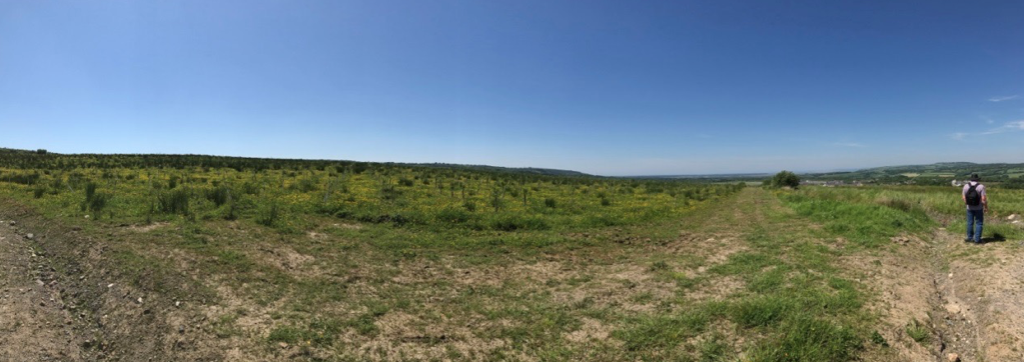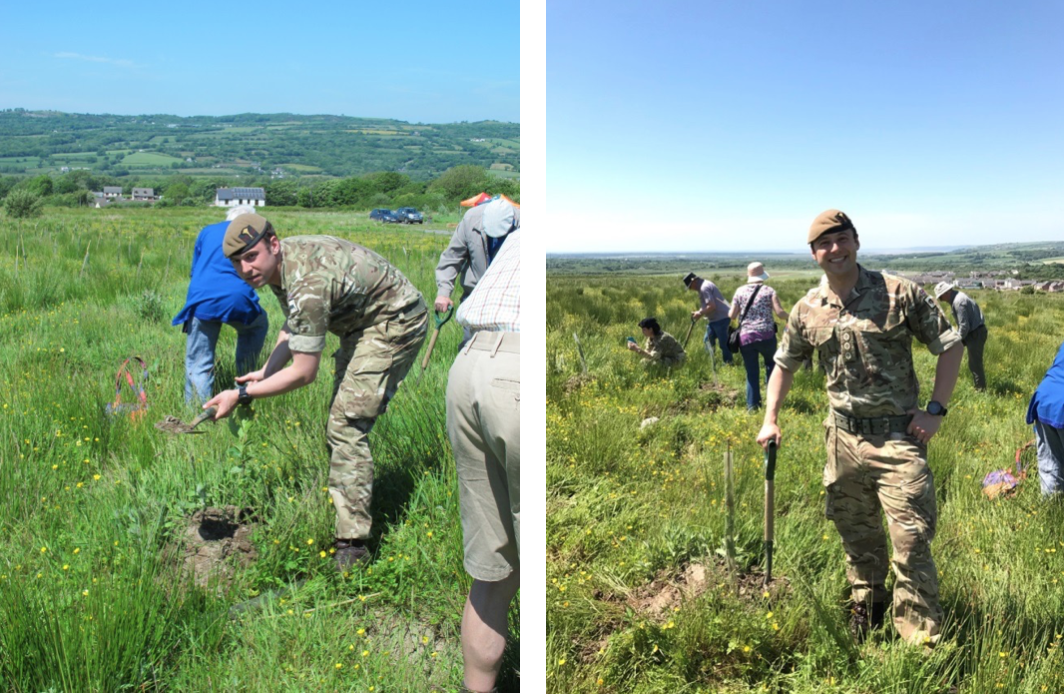There is a project underway to serve as a constant living memorial to those who made the ultimate sacrifice during the First World War. The Woodland Trust is conducting a four-year planting project during which they will plant millions of trees to represent the millions of lives cut short. One of the four new national woods is situated on 120 acres of land in Coed Ffos Las in the Gwendraeth Valley, Carmarthenshire just along the coast from Llanelli. This is land which has been identified by the Welsh Government as a priority for regeneration in order to improve health and wellbeing in deprived communities. The Woodland Trust was kind enough to extend an invitation to the Battalion for a guided tour of the commemorative wood (26 May 2017) exactly a year after Headquarter Company spent a day of serious tree planting activity during the early days of the project.
Upon arrival, I was met by a very prepared and enthusiastic group of people, themselves marshalled by approachable and knowledgeable Woodland Trust staff. The tour lasted a little over an hour and our guide stopped every couple of minutes to inform and educate the group on the different aspects of the wood.

The view of the young trees and the Gwendraeth Valley beyond.
The tour concluded with a Welsh picnic which consisted of a range of sandwiches and local meats and cheeses. After eating we were given a brief lecture on the differences and similarities of working in the forestry industry between 1917 and 2017. As it turns out, apart from the equipment used, not a lot has changed. Our guide linked the objectives and wider nature of the Woodland Trust with the effect of the First World War both on the human and the physical landscape of the country. We were informed that although woodland cover in the UK had been in decline for many years before 1914, the war and the naval blockade which was imposed on Britain led to a dramatic drop in the amount of timber which could be imported. This deficiency led to a significant increase in the number of broadleaved trees being felled and by the end of the war less than five per cent of Britain was left covered by natural woodland. Even today the UK still barely has a quarter of the average woodland cover enjoyed across mainland Europe.
After this lecture, the group was then ushered over to an undeveloped section of land where, after a brief lesson on the technicalities of the trade, we were all given the chance to plant our own trees; a fantastic opportunity which I was not expecting. It gave everyone a feeling that they had contributed, in some small way, to the act of commemoration which the project represents.

The author doing his bit for the future of the commemoration wood.
The tree planting was an excellent way to finish the day and the group trooped back to our cars feeling exhilarated, educated and with a greater understanding of the good work that the Woodland Trust conducts on a day to day basis. The visit to the memorial wood at Coed Ffos was both humbling and uplifting. So many of our stone memorials fade into the backdrop of everyday life. We see them so often that there is a danger that they lose their poignancy. The Centenary Wood overcomes this by providing an open space that one can visit and enjoy. By doing this it provides an ideal place for active remembrance which will continue for generations to come.
Poppies growing in the disturbed earth of the wood.
